Manhattan, Montana 作者: 来源: 发布时间:2021-01-28
I. Population and Area
Area
Land: 5 km2 (1.93 sq mi)
Population (2018)
Total: 1,822
Density: 300/km2 (790/sq mi)
II. Natural Geography
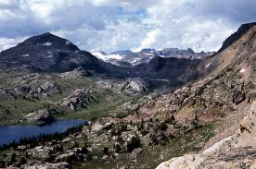
Montana rivers: Missouri & Absaroka-Beartooth Wilderness
Just northwest of Belgrade is the tiny mountain town of Manhattan, Montana. Manhattan is bordered by the Horseshoe Hills to the north, and the Bridger Range to the east. To the south lies the Spanish Peaks Wilderness. With a population of only 1,300, Manhattan easily retains its Old West Charm.
Overview
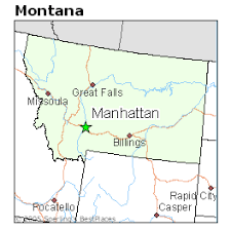
Just northwest of Belgrade is the tiny mountain town of Manhattan, Montana. Manhattan is bordered by the Horseshoe Hills to the north, and the Bridger Range to the east. To the south lies the Spanish Peaks Wilderness.
With a population of only 1,300, Manhattan easily retains its Old West Charm.
Today, the main industries of Manhattan include seed potatoes, dairy, wheat, and cattle. Manhattan also offers specialty foods, woodcarvings, and artisan crafts. Its quaint mountain town atmosphere attracts many tourists.
Location
Manhattan MT can be found along the 190 cooridor just 20 miles northwest of Bozeman. This places it in an ideal location for a day trip or afternoon trip from Bozeman.
Lodging and Services
Manhattan is small with limited services and amenities. Lodging is hard to find and there are limited places to eat. However, within a short drive, just 9 miles to Belgrade and another 10 to Bozeman, you can enjoy the quaint western feel of this charming small town in an afternoon outing.
III. GDP
Estimated median household income in 2017: $61,096
Estimated per capita income in 2017: $30,104
Website: http://www.city-data.com/city/Manhattan-Montana.html
VI. Industrial Characteristics
Montana’s economy is dominated by the primary sector—agriculture, forestry, mining, and energy production—and by services. About one-third of the state’s workforce is employed in the service sector. The outdoor recreation industry has become important, and some high-technology industries have come to the state. Per capita income is far lower than the national average, and poverty is a problem in several parts of the state, especially on Indian reservations.
Agriculture and forestry
Beef cattle, sheep, grain, sugar beets, potatoes, and fruit are produced on irrigated farms in the broad, dry valleys of Rocky Mountain Montana and in the incised valleys in Great Plains Montana. Wheat and barley are grown on large dryland grain farms throughout the two major grain-growing regions—the Golden Triangle and northeastern Montana—and in patches elsewhere. Most of the rest of the state is rangeland and is used in the livestock-ranching industry for the production of beef cattle and sheep.
Lumbering and the manufacture of forest products are vital to western Montana. Of the approximately 13 million acres (5.3 million hectares) of commercial forestland, about half is owned by the federal and state governments. Forest products constitute Montana’s third-largest industry.
Resources and power
Coal is one of the major mineral resources of Montana. Along with petroleum and natural gas, coal is extracted from the young, soft rocks of Great Plains Montana. Coal-fired thermoelectric plants are located at Colstrip and Billings. Gold, copper, platinum, talc, phosphate, vermiculite, sapphire, garnet, and other minerals are mined from the old, hard rocks of Rocky Mountain Montana and of the mountain outliers. Montana is among the top producers of talc in the United States.
Petroleum was discovered in commercial quantities at Elk Basin in 1915. The Elk Basin, Kevin-Sunburst, and Cut Bank fields led in production of petroleum and natural gas for several years. The great Williston Basin was developed in 1951, but the Bell Creek field in Powder River county has been the most productive.
Montana’s tremendous water resources provide for hydroelectric power production and for uses in other sectors of the economy. About one-third of the state’s electricity is generated by water. Runoff from the forested sides of the Rocky Mountains and the outliers recharges groundwater, fills lakes and reservoirs, and generates the flow of the great rivers. There are several large dams, power stations, and reservoirs, which are clustered mainly in the mountains of northwestern Montana.
Manufacturing
Manufacturing and processing industries contribute only about one-twentieth of Montana’s gross domestic product (GDP). There is some meatpacking, flour milling, and sugar refining, but most of the farm and ranch products are processed outside the state. The forestry industry includes the manufacture of plywood and of pulp and paper products. There is an aluminum plant at Columbia Falls, and petroleum refineries are located at Billings, Laurel, and Great Falls.
Services
Billings, Great Falls, Missoula and Butte are the state’s major regional service centers. Tourism has become a significant component of Montana’s economy and is heavily promoted.
Transportation
A network of interstate and spur freight railway lines serves many parts of Montana, and an Amtrak passenger route crosses the northern part of the state. Total highway mileage in Montana is relatively low, but there is a well-developed network of interstate and primary highways between population centres. Montana has many public airports, including those in Billings, Great Falls, Helena, and other urban areas, and there are a large number of private-use airports all across the state. Several major airlines and air taxi lines serve the state, and many small planes are privately owned.
V. Attractions
Missouri River headwaters State Park
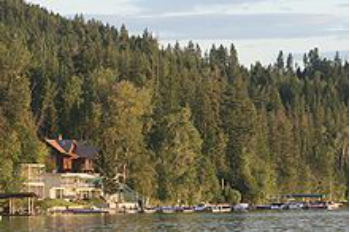
Camp where Lewis and Clark stayed in 1805. This park encompasses the confluence of the Jefferson, Madison and Gallatin Rivers.
Considering it an essential point in the geography of this western part of the continent, Meriwether Lewis wrote the country opens suddenly to extensive and beautiful plains and meadows which appear to be surrounded in every direction with distant and lofty mountains. The legendary Sacajawea was captured here as a child and eventually returned as a member of the Corps of Discovery. Another member of this expedition, John Colter, later made several trips to this area in search of furs and began his famous run nearby. Pioneers slowly settled the surrounding area and transformed it into profitable grazing and farming land. Missouri Headwaters State Park preserves much of the region's abundant wildlife, lush, vegetation, and scenic beauty that have attracted people for thousands of years.
The park provides 17 campsites, tipi rental, foot trails to points of interest, and interpretive displays of the area's cultural and natural history. River floating, fishing, picnicking, bicycling, hiking, interpretive programs, and photography are popular activities.
Activities
Bicycling, Boating, Canoeing, Exhibit, Heritage, History, Lewis And Clark, Picnicking, RV Camping, Wildlife Viewing, Bird Watching, Camping, Education, Fishing, Hiking, Kayaking, Photography, River Fishing, Tent camping
Location: 1585 Trident Road Three Forks, MT 59752
2. 320 GUEST RANCH
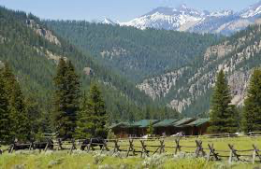
You’ve always dreamed of horseback riding beneath Montana’s soaring clear blue skies, you’ve yearned to fly fish its tumbling trout rivers, and to ski Big Sky Resort or take a sleigh ride through the star dotted Big Sky country…You’ve always talked about spending time with family in a log cabin rental! And that’s what life at the 320 Guest Ranch-Big Sky’s Classic vacation lodge-is all about. Stay a day or Stay a week….
Activities
Montana is world-famous for outdoor recreation—and the 320 Guest Ranch is near Big Sky, in the heart of the Gallatin National Forest, and close to Yellowstone National Park. That means we’ve got it all right here in our own back yard. Big Sky winter and summer activities include hiking, fishing, rafting, biking, snowmobiling, horseback riding, skiing and so much more—if you can do it outdoors, you can do it in our area – so don’t forget your camera…
History
320 Guest Ranch history affords an intriguing window into the early days of Western tourism and Big Sky back in the day. Our historical guest ranch journey began in 1898, when Sam Wilson homesteaded 160 acres along the Gallatin River. In 1900, Sam´ s father, Clinton, claimed an adjoining 160 acres and they combined their two properties, naming the stunning parcel the “Buffalo Horn Resort.”
On January 16, 1936, Dr. Caroline McGill, a woman far ahead of her time, purchased the ranch from the Wilson family. In addition to being Montana’s first woman doctor and first pathologist, Dr. McGill was an avid hunter and fisher. She believed that time spent outdoors was physically and mentally beneficial and bought the ranch as a retreat for her patients and friends.
Soon after, the ranch’s popularity began to grow. In the summer of 1938, Dr. McGill trucked in a Cadillac engine to generate power, bringing the ranch electricity 10 years before power lines showed up in the Gallatin Canyon.
In 1955, Dr. Caroline McGill was awarded an honorary degree from Montana State University for her outstanding service to Montana in medicine and her dedication to Montana’s natural resources. That year, she retired from medicine and settled here at 320 Guest Ranch permanently, living in a cabin that the crew finished for her on Christmas — now known as the “Christmas Cabin.”
Over the years, Dr. McGill acquired an extensive collection of antiques from around Montana, filling buildings at Montana State University with items of historical interest. In August of 1956, she turned the collection into a small museum housed in an old dairy located on campus. In January 1967, the now-famous Museum of the Rockies opened to the public, featuring Dr. McGill’s artifacts—although for many years, Bozeman residents referred to it as “The McGill Museum.” In 1998, the Museum of the Rockies opened an exhibit dedicated solely to Dr. McGill’s life. Also, part of her collection at the 320 Guest Ranch was donated to Mr. and Mrs. Charles Bovey to help in their restoration of Virginia City and Nevada City (two historic Montana mining towns now preserved as popular tourist attractions).
On January 4, 1959, at the age of 79, Caroline McGill passed away in her Christmas Cabin. In her will, she gave her good friends, the Goodrich family, the option to purchase the ranch, which they did, and continued to manage it until 1987 when the ranch was sold to Dave Brask, the current owner.
Since then, the 320 Guest Ranch has grown from a capacity of 20 guests to well over 200. Dr. McGill’s original ranch house was moved to a more secluded setting near Buffalo Horn Creek, ranch staff occupy the Christmas Cabin, and the original Wilson homestead cabin is now a part of the 320 Steakhouse. Very few of the original accommodations could be saved, but even the new cabins capture the feel of those old buildings, from the days when Dr. McGill spent the day on the trail with her guests. Of course, at our historical guest ranch, the mountains and the big skies haven’t changed a bit.
TEL: 406-995-4283
3. Absaroka-Beartooth Wilderness Area
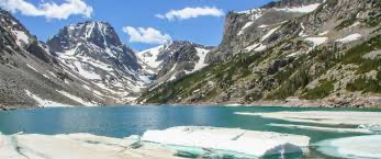
The Absaroka-Beartooth Wilderness Area, covering 920,310 acres, is an administrated unit of the Gallatin National Forest, Custer National Forest and the Shoshone National Forest. The Absaroka-Beartooth Wilderness derives it's name from the Absaroka and Beartooth Mountain Ranges. The Absarokas are named after the Crow Indians (Absaroka being the Indian name for Crow). The Beartooth Mountains were named after the likeness between a jagged mountain peak in the range and a bear's tooth.
To the west lie the Absarokas characterized by stratified volcanic and metamorphic rocks forested valleys and rugged peaks. The Absarokas form a chain of mountains that includes the spectacular peaks east of the Paradise Valley between Livingston and Gardiner the northeastern corner of Yellowstone Park Pilot and Index Peaks south of Cooke City and the North Absaroka Wilderness in Wyoming. The Absarokas are home to a variety of wild animals notably the threatened grizzly bear.
The eastern side of the wilderness is dominated by the high granitic plateaus of the Beartooth Mountains. Hundreds of lakes lie among the bald rock and alpine tundra of the plateaus. This country is starkly beautiful but extremely fragile with unpredictable changes in weather. Wildlife that you may see includes moose, mule deer, mountain goats and bighorn sheep.
The wilderness visitor can view many unique geologic features in the Absaroka-Beartooths as well. From the mountain peaks, glaciers, tundra plateaus, lakes, and basins of the high elevations to the midslopes and deep canyons and valleys below, the Absaroka-Beartooth offers scenic panoramas. The visitor may prefer the views of the ragged rock peaks and sheer rock walls that plunge to talus slopes and canyon bottoms in the Beartooths, or perhaps the Absarokas will be more appealing where the dense forests at the lower elevations contrast nicely with the many intermingled mountain meadows before giving way to alpine meadows and patches of subalpine forest.
Primitive camping is allowed with no public facilities. Call Gallatin National Forest for further information on recreation opportunities and special instructions.
Goderich's three beautiful beaches are a must-see. With free parking, picnic shelters, playgrounds, and public washrooms these beaches are the perfect location for a day trip. With a boardwalk stretching 1.5 kilometres along the beachfront, you can be sure to catch our famous sunsets from every angle. The hours of operation are 6 a.m. - 11 p.m. Recreational vehicles and trailers of any type are prohibited. Check our list of campgrounds here to find a convenient place to camp.
TEL: 406-522-2520
FAX: 406-522-2528
VI. History
Manhattan was not originally Manhattan, but named Moreland, as discussed in an earlier blog about the effort to build a barley empire in this part of Gallatin County at the turn of the century by the Manhattan Malting Company and its industrial works here and in Bozeman. But the existing railroad corridor, along with the surviving one- and two- story commercial buildings facing the tracks (and old U.S. Highway 10), always made a drive through Manhattan a pleasant diversion as I crisscrossed Montana in 1984-1985. The town has a strong 1920s feel, in large part because of an earthquake that destroyed a good bit of the town’s original buildings in 1925.
Manhattan has changed significantly over 30 years–as the storefronts above suggest–just not to the degree of Belgrade. But you wonder if its time is not coming. From 1980 to 1990–the years which I visited the town the most–its population barely ticked up from 988 to 1032. In the 25 years since the population has expanded to an estimated 1600.
The historic auto garage from c. 1920 above is one of the most significant landmarks left upon old U.S. 10, and I am glad it is still used for its original function in the 21st century.
Community landmarks-fraternal lodges, the wonderful 1960s modernism of the Manhattan public school, and historic church buildings add character and a sense of stability to Manhattan.
Different variations on the Bungalow style characterize the town’s historic neighborhood. Buildings, like along old U.S. 10, have changed but still that sense of the early 20th century comes strongly across as you walk along Manhattan’s sidewalks.
At the same time, the new face of Manhattan is appearing in developments just south of the railroad corridor and in new construction facing the tracks. Both buildings “fit” into the town but stylistically and in materials belong more to the 21st century American suburb, especially when compared to the remaining vernacular commercial buildings.
VII. Other Information
Notable residents
William Frankena: professor and moral philosopher was born here
In the mid-1990s the town of Manhattan was featured on the "Real Food for Real People" national advertising campaign by the Beef Industry.
VIII. Contact Information
Government
Mayor: glen Clements
₋ Town of Manhattan
Address: 207 SOUTH SIXTH STREET, MANHATTAN, MT, 59741
TEL: 406-284-3235
Email: manhattanmayor@gmail.com
